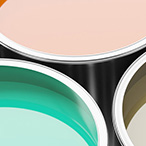Sovereign Metals: Unlocking the Potential of Rutile & Graphite for Modern Industries
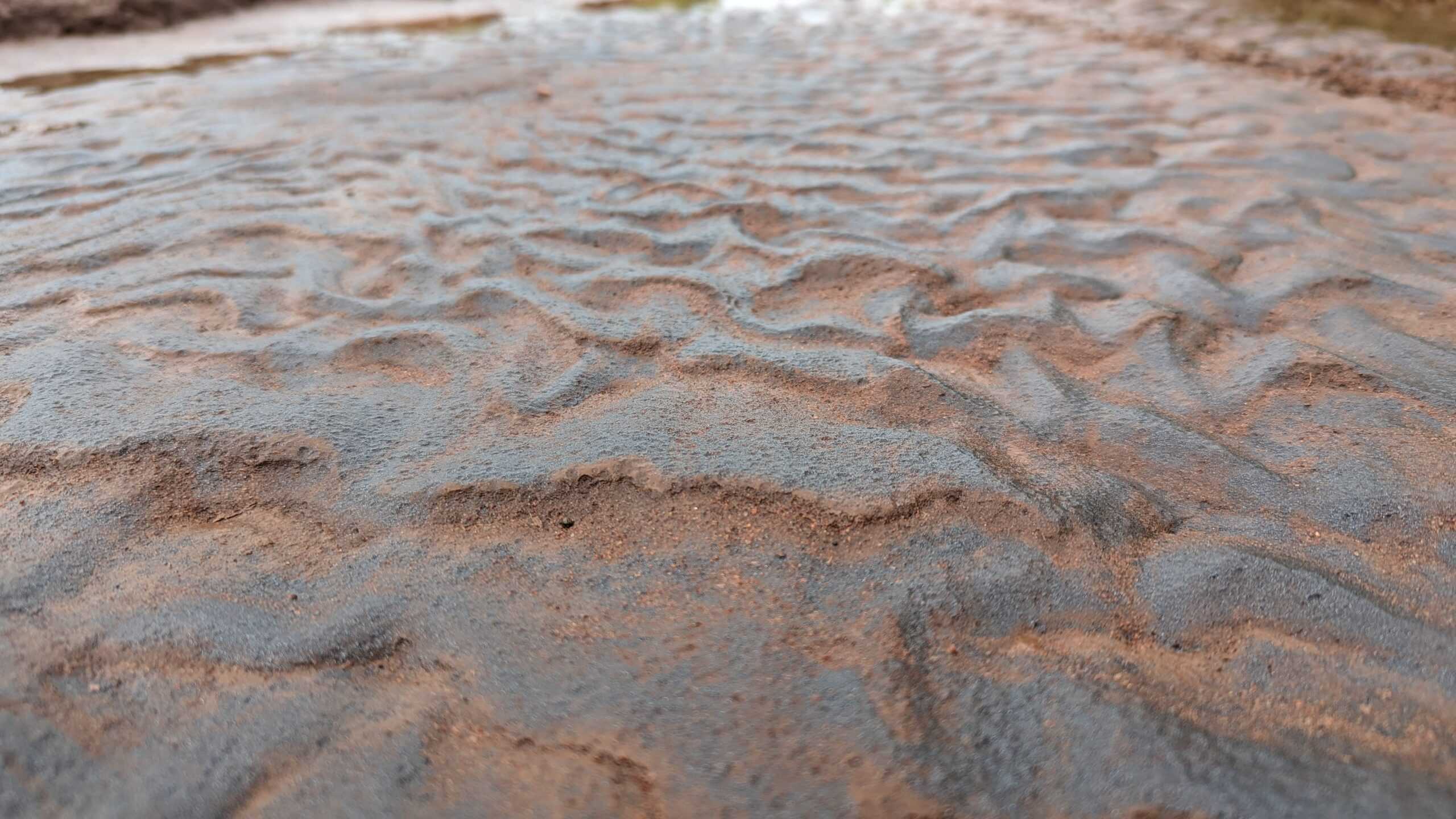
Sovereign Metals owns the world's largest natural rutile and second-largest graphite deposits. Learn how they're positioned to supply critical minerals sustainably.
- Sovereign Metals holds the world's largest natural rutile deposit in Kasiya, Malawi with 17.9Mt of contained natural rutile. Rutile is the purest, highest-grade natural titanium feedstock used extensively in aerospace, defense, healthcare and technology. Global rutile supply is decreasing while demand increases.
- Having the world's second largest flake graphite deposit, also in Kasiya, with 24.4Mt of contained natural graphite. Graphite demand is surging for use in lithium-ion batteries for electric vehicles. China dominates graphite supply currently.
- Both their natural rutile and graphite have significantly lower carbon footprints compared to alternatives, positioning Sovereign to help decarbonise these industries.
- Focusing on developing an environmentally responsible, sustainable operation powered by renewables with strong community engagement in Malawi.
- The widening supply deficits and growing demand provide a major opportunity for Sovereign to establish itself as a leading producer of these critical minerals.
Sovereign Metals Limited (ASX:SVM), an exploration and development company, is well-positioned to capitalise on the growing demand for rutile and graphite. With the world's largest natural rutile deposit and second-largest flake graphite deposit at their Kasiya project in Malawi, Sovereign Metals is poised to become a major player in the global supply chain for these critical minerals.
Rutile: The Purest Form of Titanium
“Titanium is essential for U.S. defence systems…supports 15 of the 16 critical infrastructure sectors identified by the Department of Homeland Security.” - U.S. Bureau of Industry and Security, Commerce
Rutile is the purest, highest-grade naturally occurring form of titanium, with a titanium dioxide (TiO₂) content of 95% or higher. In contrast, ilmenite, another titanium-bearing mineral, has a lower TiO₂ content ranging from 30% to 60%. Titanium is found in nature primarily in these two feedstock forms:
- Natural Rutile (95%+ TiO₂): Requires little to no beneficiation from its natural form.
- Ilmenite (30-60% TiO₂): Requires energy-intensive and carbon-intensive processing before being used in titanium metal production.
The Kasiya deposit, owned by Sovereign Metals, boasts a Mineral Resource Estimate of 1.8 billion tonnes at 1.0% rutile, resulting in 17.9 million tonnes of contained natural rutile, making it the largest rutile deposit in the world. The high-grade nature of rutile makes it the preferred feedstock for the titanium industry, as it requires minimal processing compared to ilmenite.
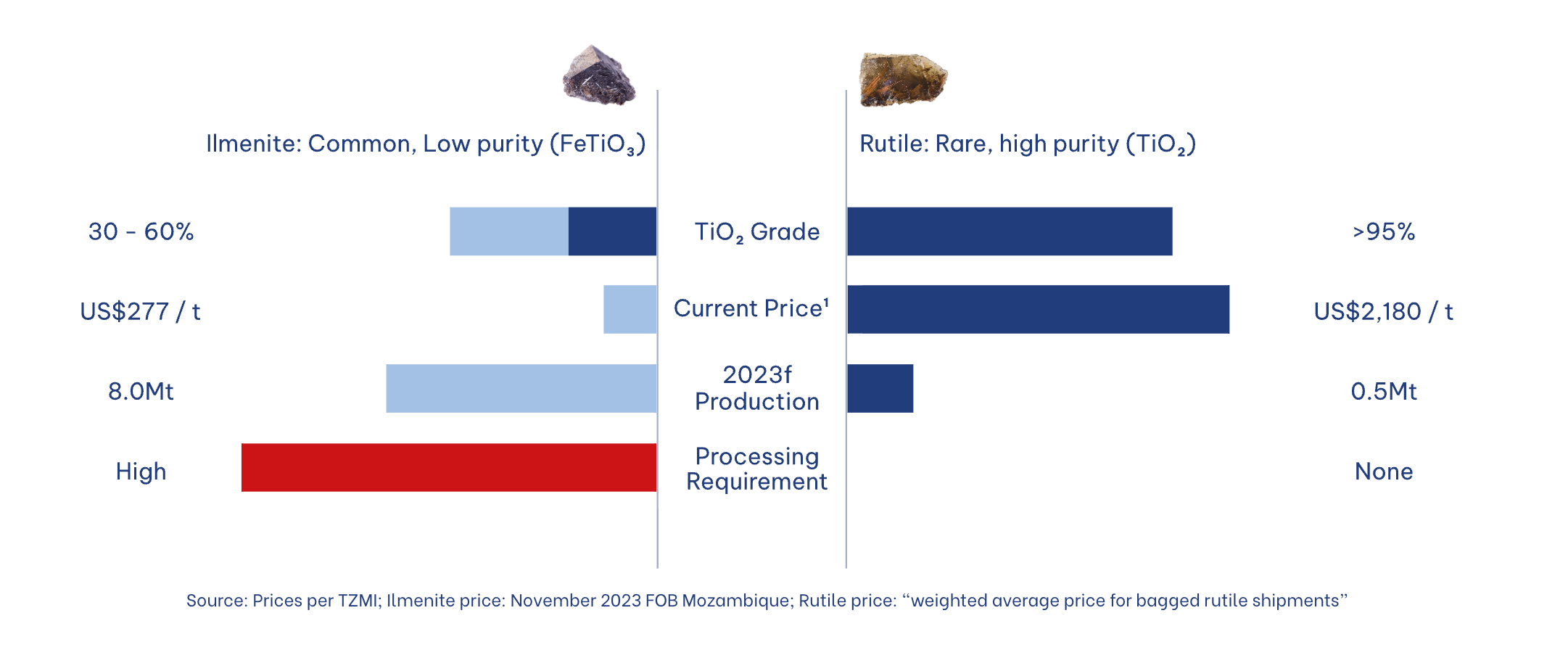
Uses & Applications
Titanium, derived from rutile, is a remarkable metal known for its high strength-to-weight ratio, corrosion resistance, and chemical inertness. These properties make it essential for various industries, including:
- Aerospace: Titanium is widely used in aircraft engines, airframes, and spacecraft components due to its strength and lightweight properties.
- Defence: Titanium's durability and resistance to extreme conditions make it crucial for military applications, such as armor plating, naval ships, and submarines.
- Healthcare: Titanium's biocompatibility and corrosion resistance make it ideal for medical implants, prosthetics, and surgical instruments.
- Technology: Titanium is used in consumer electronics, such as smartphones and laptops, for its strength and aesthetic appeal.
- Pigments: Titanium dioxide is a key ingredient in the production of white pigments used in paints, coatings, plastics, and paper.
Market Size & Growth
The global titanium market size was valued at USD$24.1 billion in 2021 and is projected to reach USD$31.7 billion by 2030, growing at a CAGR of 3.1% during the forecast period (2022-2030). The increasing demand for titanium in various end-use industries, such as aerospace, defense, and healthcare, is expected to drive market growth.
Supply & Demand Dynamics
Global rutile supply is decreasing as several operations' reserves are depleting concurrently with declining ore grades. Major rutile producers, such as Sierra Rutile in Sierra Leone and Base Resources' Kwale operations in Kenya, are facing dwindling supplies. The global rutile supply is projected to decline sharply beyond 2023, and there are limited new deposits forecast to come online, resulting in a extreme structural deficit in the supply of natural rutile.
On the other hand, the demand for titanium is increasing, driven by the growing aerospace, defense, and healthcare industries. This widening gap between supply and demand presents a significant opportunity for Sovereign Metals to capture market share and establish itself as a reliable supplier of high-quality natural rutile.
Price Volatility
The scarcity of natural rutile has led to price volatility in the titanium feedstock market. As of November 2023, the price of natural rutile, based on the weighted average price for bagged rutile shipments, was significantly higher than that of ilmenite, an alternative titanium feedstock with a lower TiO₂ content (30-60%).
Lifecycle & Environmental Impact
Sovereign Metals' natural rutile has a significantly lower environmental impact compared to other titanium feedstocks. An independent, peer-reviewed, ISO-compliant life cycle analysis estimated a global warming potential of 0.1 tonnes of CO₂-equivalent emitted per tonne for Sovereign's natural rutile product, compared to 2.0 tonnes of CO₂-equivalent per tonne for titania slag production in South Africa and 3.3 tonnes of CO₂-equivalent per tonne for synthetic rutile production in Australia.
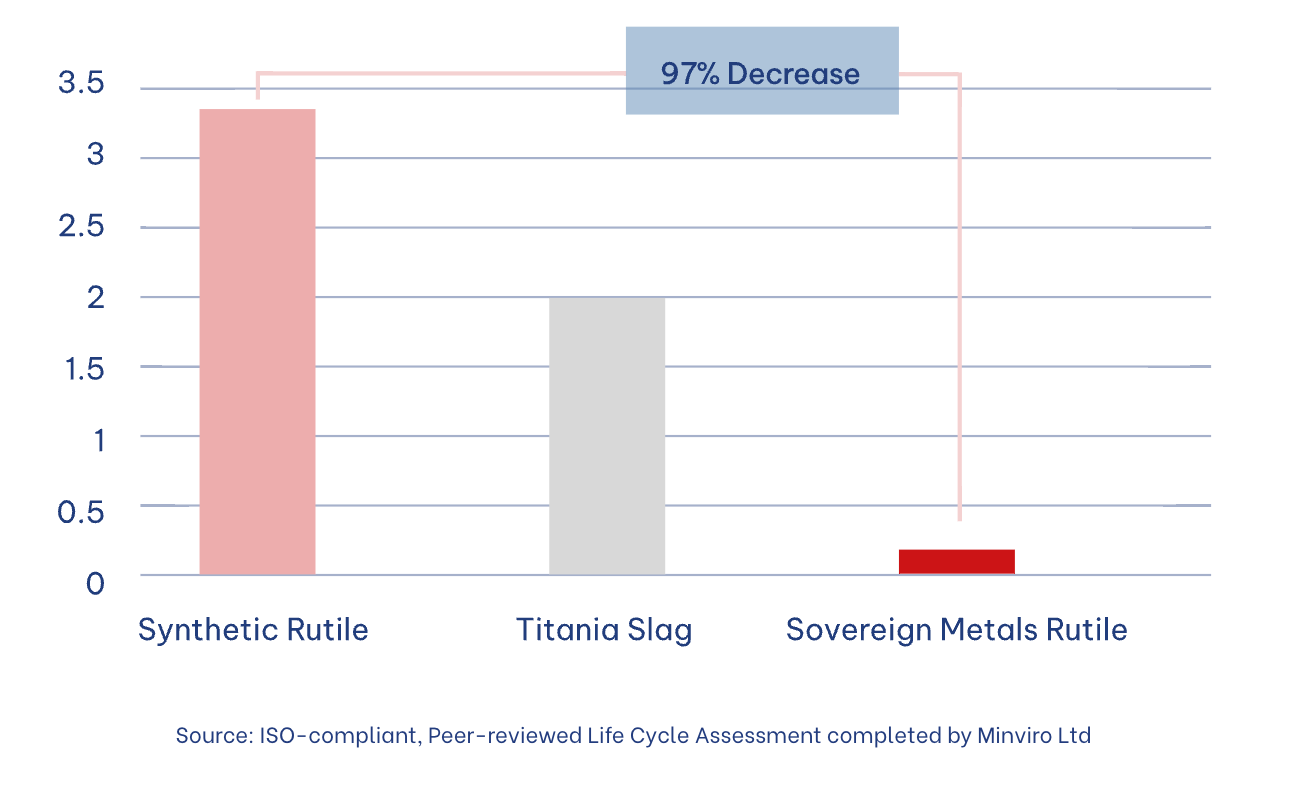
By supplying the titanium industry with natural rutile, Sovereign Metals can help reduce the industry's carbon footprint. Switching to Sovereign's rutile product would be equivalent to removing approximately 140,000 internal combustion engine cars from European streets per year, considering Kasiya's minimum production life of 25 years.
Graphite: A Critical Mineral for the Energy Transition
“Graphite has played an important role in the emerging non-carbon energy sector… Current graphite capacity may not be adequate for the increasing demands.” - U.S. Department of the Interior
Graphite, a naturally occurring crystalline form of carbon, is a "by-product" from the Kasiya deposit. The Kasiya project is the second-largest flake graphite deposit in the world, with a Mineral Resource Estimate of 1.8 billion tonnes at 1.4% graphite, resulting in 24.4 million tonnes of contained natural graphite.
Uses & Applications
Graphite is used in multiple industries, but the high-growth area is in the battery sector. Graphite is a critical component in lithium-ion batteries, serving as the anode material. In fact, graphite can account for up to 50% of an electric vehicle (EV) battery's volume.
Market Size & Growth
In 2022, global graphite consumption stood at 3.6 million tonnes, with the battery sector accounting for 22.1% of the total demand. By 2033, overall demand is forecast to reach 8.1 million tonnes, with the battery sector's share rising to 55.7%, according to Fastmarkets.
Supply & Demand Dynamics
China currently dominates the global graphite supply chain, with almost 100% of European anode material originating from China. Sovereign Metals' Kasiya project is set to become the largest secure long-term source of natural graphite supply outside of China, producing at an industry-low operating cost.
Price Volatility
The growing demand for graphite in the battery sector, coupled with the limited supply outside of China, has led to price volatility in the graphite market. As EV adoption continues to accelerate, the demand for graphite is expected to surge, potentially leading to further price increases and supply chain disruptions.
Lifecycle & Environmental Impact
Sovereign Metals' natural graphite has a significantly lower environmental impact compared to synthetic graphite and Chinese natural graphite production. An independent, peer-reviewed, ISO-compliant life cycle analysis estimated a global warming potential of 0.2 tonnes of CO₂-equivalent emitted per tonne for Sovereign's natural graphite product, versus 1.2 tonnes of CO₂-equivalent per tonne for Chinese natural graphite production and 15-25 tonnes of CO₂-equivalent per tonne for synthetic graphite production.
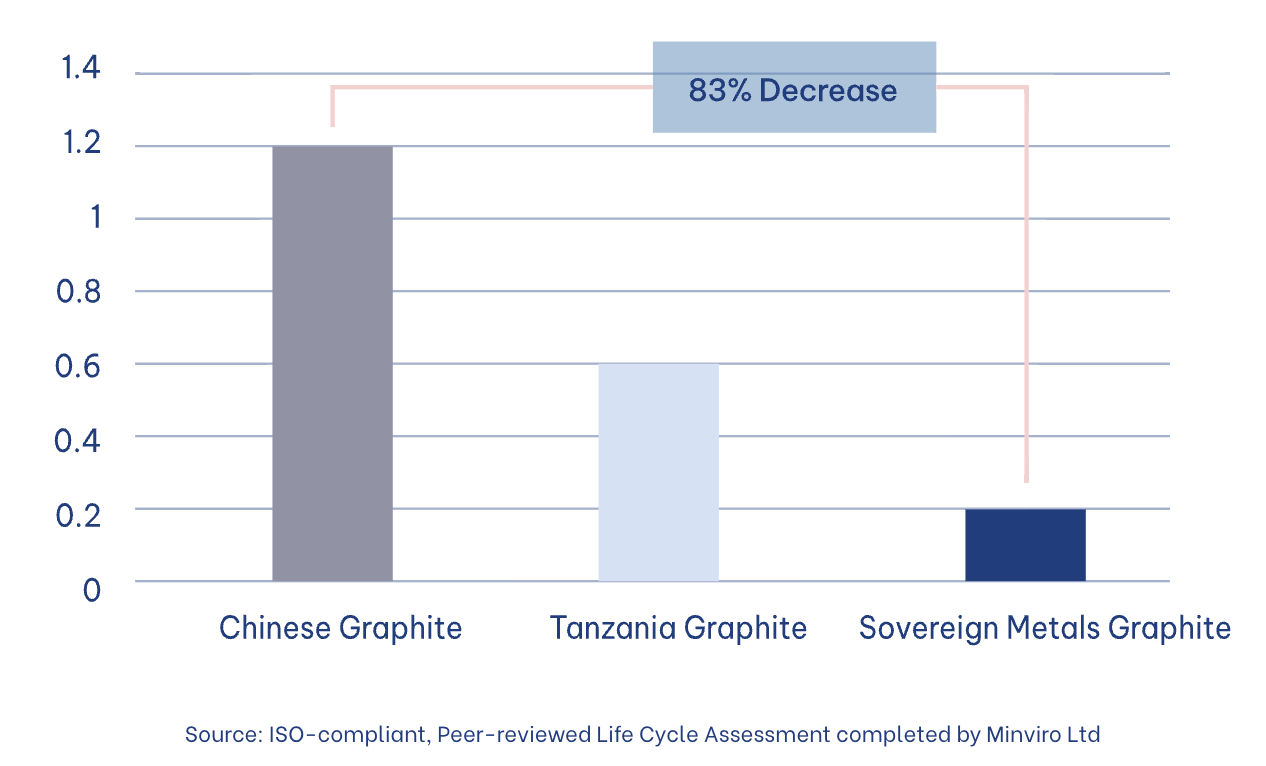
By supplying the battery industry with low-carbon natural graphite, Sovereign Metals can help decarbonise the lithium-ion battery sector and support the global transition to clean energy.
Sovereign Metals: Positioned for Success
Sovereign Metals is well-positioned to capitalise on the growing demand for rutile and graphite, thanks to its world-class Kasiya deposit in Malawi. The company's objective is to develop a large-scale, long-life rutile-graphite operation focused on environmental responsibility, sustainability, and social upliftment.
Key initiatives that set Sovereign Metals apart include:
- Predominantly solar and hydro-powered operation, minimising the project's carbon footprint.
- Progressive rehabilitation to return land to its original condition, demonstrating the company's commitment to environmental stewardship.
- Established ESG framework advancing social initiatives in Malawi, ensuring that local communities benefit from the project's development.
With its vast mineral resources, low-cost operations, and strong focus on sustainability, Sovereign Metals is poised to become a major player in the global supply chain for rutile and graphite. As demand for these critical minerals continues to grow, driven by the expanding aerospace, defence, healthcare, and battery sectors, Sovereign Metals is well-positioned to meet the needs of these industries while contributing to the global transition to a low-carbon future.
The Investment Thesis for Sovereign Metals
- Exposure to two critical minerals, rutile and graphite, with robust demand outlooks driven by the global shift to cleaner technologies.
- World-class, long-life Kasiya deposit in Malawi offers unparalleled scale and cost advantages for both rutile and graphite production.
- Industry-leading low-carbon profile for both rutile and graphite aligns with global sustainability goals and decarbonisation efforts.
- Significant supply chain diversification potential outside of China for natural graphite, vital for the EV and renewable energy sectors.
- Upcoming catalysts include further exploration results, definitive feasibility study (DFS) completion, and securing binding offtake agreements, paving the way for re-rating as Sovereign advances toward production.
Analyst's Notes




Subscribe to Our Channel
Stay Informed











